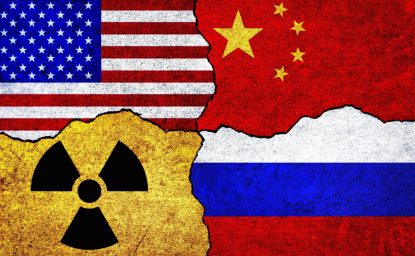By any measure, the US has done a remarkably effective job of winning over like-minded governments to its view of limiting the presence of “untrustworthy” (read: Chinese or Russian-developed) companies in critical technology networks.
In 2020, the UK announced it would not ban Chinese vendors from all parts of its 5G network in a move that frustrated US counterparts and risked undermining the US strategy at its outset. Following steady lobbying from the US government and the implementation of sanctions against Chinese entities, however, they reversed course. Today, the UK government is among the most ardent advocates for the Prague Proposals – a set of recommendations on technical and non-technical risks to 5G infrastructure that aligns with the US view.
Canada, France, and Germany all deliberated for a long time, eager not to upset relations with China, before ultimately acquiescing to the view that our digital infrastructure cannot be owned and operated by companies that function at the whim of authoritarian governments. Alignment on restricting autocratically controlled technology is now moving more rapidly, with cooperation among likeminded states on everything from ransomware to AI to quantum computing.
While the Trump Administration embraced bilateral pressure, the Biden Administration has embraced international coalition-building. But its approach is not merely a reversion to the status quo. More so than any administration before, Biden’s is largely looking to ad hoc coalitions rather than traditional forums for international engagement to drive its agenda.
This is due in part to the realities facing the administration: most existing forums were designed with the mindset that economic integration would drive all countries toward the US’s democratic, capitalist model. Now that the “end of history” has been debunked and decoupling critical supply chains from China has superseded integration as the preferred approach, many pre-existing multilateral forums are no longer viewed as feasible settings for implementing multilateral technology policy initiatives.
Take the Asia-Pacific Economic Cooperation (APEC) forum as an example. Its raison d’etre is “championing free trade and open investment, promoting and accelerating regional economic integration, [and] encouraging economic and technical cooperation.” While the US may share these objectives with many APEC member economies, APEC’s sweeping membership includes governments such as Russia and China, with whom such integration is no longer desired. At the same time, APEC undermines its utility by excluding major regional partners such as India.
APEC is not unique in this regard. The G20, United Nations (UN), and the World Trade Organization (WTO) all face similar challenges.
In response, we saw the US first pivot away from APEC to the Trans-Pacific Partnership (TPP), then to the Indo-Pacific Economic Framework for Prosperity (IPEF) as its preferred mechanisms for driving regional economic discussion and integration. Similarly, the recently established Counter Ransomware Initiative (CRI) has become the preferred mechanism for addressing legal and policy issues around cybercrime, rather than the UN. And the Quadrilateral Security Dialogue (Quad) has risen from dormancy to become a highly active environment for Australia, India, Japan, and the US to cooperate on issues ranging from technology policy to vaccines.
The center of gravity has shifted. The deadlock resulting from traditional methods of international cooperation has forced a call for new bargains, new coalitions, and new forms of international cooperation.
The US has taken a pragmatic and innovative approach to advancing its foreign policy objectives in attempts to move away from the slow progress of multilateral institutions. However, an ad hoc approach to multilateral forum shopping is certainly not without its challenges.
Overstretching Smaller Partners
No US partner has the same level of technical and diplomatic resources at its disposal as the US. New multilateral forums require additional resources in the form of technical and diplomatic experts, many of whom already have full plates. Adding more initiatives to track, meetings to attend, and interagency processes to manage means losing resources elsewhere. This comes at a cost. When using an ad hoc approach to international cooperation, all parties must consider the impact it will have on smaller partners that cannot afford the resources needed to participate in multiple fora. The same is true for the business community, an integral stakeholder in many of these initiatives.
A similar dynamic exists for senior leadership in those smaller governments. While they can delegate their participation, this dilutes high level buy-in and attention to the initiative, limiting what can be achieved.
Sunsetting Outdated Forums without Creating a Geopolitical Vacuum
Most institutions find it more challenging to phase out unproductive initiatives than to launch new ones, but multilateral forums seem to suffer more than most. Sunk cost fallacies and inter-governmental vested interests combine to sustain many forums beyond their point of utility.
This is of course linked to challenge #1: if forums such as APEC could simply sunset in favor of an equivalent forum consisting of IPEF partners, workloads would remain equivalent, while opportunities for progress would increase. Many, perhaps most APEC economies, however, have neither the political will nor the economic luxury of taking a step so clearly targeted at excluding China.
Were the US or key partners to unilaterally withdraw, however, China would surely seize the opportunity to advance its own agenda. This was demonstrated when China floated the idea of joining TPP after the US’ departure. Game theory would indicate that the most likely outcome is that all parties continue to engage for defensive reasons, spreading their resources ever thinner and further diluting the impact of these multilateral forums.
Effectively Selecting Partners for Ad Hoc Initiatives
As new forums are created to champion a particular policy agenda, it must be determined which partners will participate in each. The CRI cast a wide net, given the need for broad cooperation in bringing cybercriminals to account in far-flung parts of the world. Conversely, for Open RAN activities, the Quad has arguably been the multilateral center of gravity, as the ambition of allies in APEC has not yet been matched by those in the EU.
Such a flexible approach has clear benefits, but risks leaving some partners feeling shunned by the choices made. Conversely, it reduces the ability of the US government to encourage partners to make difficult but necessary choices when they know that an a la carte option is available.
Navigating a Lack of Bureaucratic Resources and Buy-In
Multilateral bureaucracies are often maligned, but fulfill a critical function in catalyzing the work toward the objectives of the institution. Ad hoc coalitions, and even nascent multilateral organizations such as the Quad, have no secretariat responsible for the day-to-day execution of the mission.
As a result, activity can be sporadic and oriented around periodic high-level meetings (and the need for national-level bureaucrats to show progress at those meetings) rather than a targeted action plan. Many of the more challenging tasks the US and its partners want to achieve cannot be executed in a 30-day scramble, risking trading tangible progress for statements of intent.
Giving Strategic Objectives Primacy over Tactical Initiatives
The plethora of workstreams will ensure a steady stream of activity to keep bureaucrats busy under pre-existing forums such as APEC, G7, G20, ITU, UN, WTO, as well as new or revamped forums such as the CRI, Declaration on the Future of the Internet, IPEF, Quad, UN Cybercrime Treaty and Open-Ended Working Group.
In the drive to find tactical wins in each forum, however, the administration must ensure that its strategic objective – limiting the presence of “untrustworthy” companies in critical technology networks – remains paramount. After all, "strategy without tactics is the slowest route to victory. Tactics without strategy is the noise before defeat."
Conclusion
The Biden Administration should be commended for restoring the US’ commitment to international coalition-building, and for adopting an unorthodox approach to advancing its strategic objectives. An ad hoc approach to forum selection (or creation) is the best approach to maximize opportunities for progress, particularly given the critical issues at hand. Done correctly, it can incentivize partners to be proactive, while also giving them the space to tailor the level of engagement on discrete initiatives to their economic and geopolitical realities.
The US must, however, iterate quickly if it is to reap the benefits of a trial-and-error approach and avoid its strategic objectives collapsing under the weight of myriad tactical initiatives. It must also demonstrate a ruthlessness in sunsetting initiatives that no longer facilitate the Administration’s objectives, while maintaining a more limited presence in those where withdrawal is not feasible. Finally, it must ensure that among the multitude of initiatives, it continues to articulate a clear and attractive strategic vision that appeals not only to governments around the world, but also their citizens.
Author

Senior Director, Global Security and Technology Strategy, Venable LLP

Wahba Institute for Strategic Competition
The Wahba Institute for Strategic Competition works to shape conversations and inspire meaningful action to strengthen technology, trade, infrastructure, and energy as part of American economic and global leadership that benefits the nation and the world. Read more

Explore More
Browse Insights & Analysis
US Inaction Is Ceding the Global Nuclear Market to China and Russia

Promoting Convergence in US-Brazil Relations


